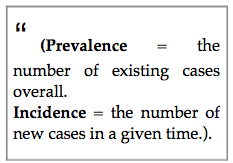The increasing backache prevalence seems to be a genuine phenomenon of the 20th/21st centuries in Western societies at the same time as the increase in sedentary occupations and lack of exercise .. The scale of mechanical Low Back Pain (LBP) problems is confirmed by many studies from many countries.
 There has been a slight drop in prevalence in the last few years. Perhaps it is presumptuous to suggest that this may be due to improved seating following my views put forward in 1998 although a full 2T chair is not yet in the market.
There has been a slight drop in prevalence in the last few years. Perhaps it is presumptuous to suggest that this may be due to improved seating following my views put forward in 1998 although a full 2T chair is not yet in the market.
LBP is the most common health problem for British workers. The Clinical Standards Advisory Group (Waddell), in 1994, in a study of the backache prevalence and it’s cost estimated that, since 1978 the annual loss of working days due to low back pain had increased 200% to 150 million days. A study in Manchester (Croft 1998) showed that 50% of women aged 45-50 claimed to have suffered from backache in the previous month. A prospective UK trial (Croft 1999) showed a 36% increase in prevalence of backache and incidence rate in 1 year. Since then there has been a slight drop possibly due to better designed chairs, many of which are slowly approaching my views.
Back pain is also one of the most costly conditions for which an economic analysis has been carried out in the UK and this is in line with findings in other countries. It is estimated that the direct health care cost of back pain in 1998 to be £1632 million. Approximately 35% of this cost is most likely paid for directly by patients. With respect to the distribution of cost across different providers, 37% relates to care provided by physiotherapists and allied specialists, 31% is incurred in the hospital sector, 14% relates to primary care, 7% to medication, 6% to community care and 5% to radiology and imaging used for investigation purposes. However, the direct cost of back pain is insignificant compared to the cost of informal care and the production losses related to it, which total £10668 million. (Maniadakis N, Gray A. 2001) (Maniadakis N, Gray A. The economic burden of back pain in the UK. Pain. 2000 Jan;84(1):95-103.)
The Centre for Health Economics (CHE) showed a cost to the UK NHS of £265.3 billion – £382.7 billion in 1992-93. https://www.york.ac.uk/che/pdf/DP129.pdf
The Work Foundation estimates that employees suffering from bone and joint pain cost the EU’s economies 240bn euros (£200bn) each year. “Sitting is the new smoking,” explains Prof Steve Bevan, director of the Centre for Workforce Effectiveness at the Work Foundation. “The more sedentary you are the worse it is for your health.” The Lancet, published a study in 2012, which found that musculoskeletal conditions were the second greatest cause of disability in the world, affecting over 1.7 billion people worldwide. “I describe suffering from musculoskeletal disorders as being like a Ferrari without wheels,” says Prof Woolf, who is also the chair of Bone and Joint Decade. “If you don’t have mobility and dexterity, it doesn’t matter how healthy the rest of your body is.”
In the United States About 100 million workdays are lost annually (Johanning 2000). Insurance figures show that 82% of US office workers complain of LBP (personal communication 2012 HAS), Lower back pain’s economic impact is shown to be the number one reason for individuals under the age of 45 to limit their activity, second highest complaint seen in physician’s offices, fifth most common requirement for hospitalization, and the third leading cause for surgery. (Health and Safety Executive‘s Better Backs campaign.https://en.wikipedia.org/wiki/Health_and_Safety_Executive).
The UK DoH (Dept. of Health, Dept of Children, Schools & Families.) issued an authorative report on ‘Sedentary Behaviour and Obesity: Review of the Current Scientific Evidence’. See https://assets.publishing.service.gov.uk/government/uploads/system/uploads/attachment_data/file/213745/dh_128225.pdf
“In conclusion, upper-extremity MSS (musculoskeletal symptoms) affected more than half of the study participants who used a computer for more than 15 hr/week (Gerr et al American Journal of Industrial Medicine 41:221-235,2002).
. The actual increase of mechanical spinal pathology and backache prevalence seems to be a genuine phenomenon of the 20th century and is rising exponentially (Hemingway 1997) with the increase in sedentary occupations.”Mankind has progressed from Homo sapiens to ‘Homo sedans” (Mandal).
(Prevalence = the number of existing cases overall. Incidence = the number of new cases in a given time.)
